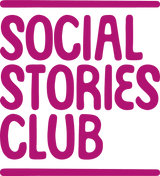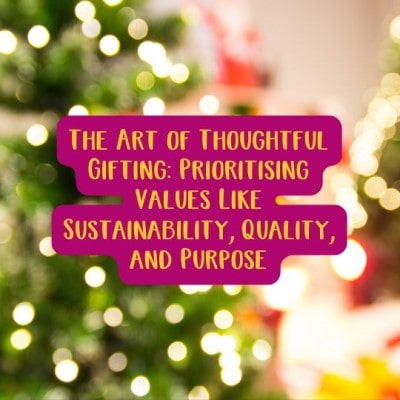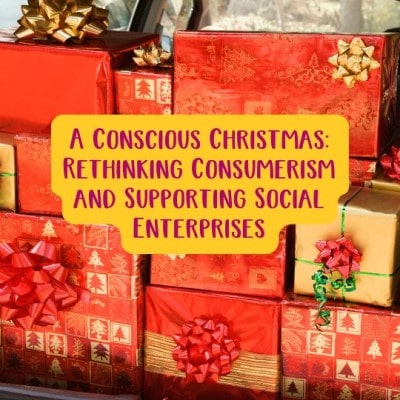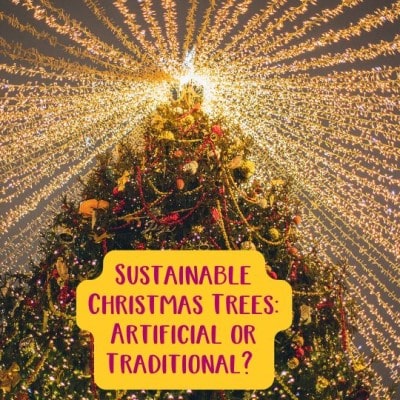
The UN's Sustainable Development Goals: A Glimpse Into the Future by a social enterprise gifting company
As a social enterprise gifting company, we look to the United Nations Sustainable Development Goals as a form of guidance for different social causes we can support. In each of our social enterprise gift hamper we have lots of different products each with stories supporting the goals such as teas whose proceeds are used to educate girls and nuts whose proceeds are used to build schools. Inside the story booklet, included with each gift, we explain how this gift hamper supports the Sustainable Development Goals and we share the stories behind the social enterprise products. As we create sustainable gift hampers we believe it is important to educate about issues surrounding sustainability. The United Nations General Assembly adopted the 2030 Agenda for Sustainable Development — more commonly known as the UN’s Sustainable Development Goals (SDGs). These 17 broad goals are universal in scope, applicable to all countries and further subdivided into measurable targets referred to as "indicators." The overarching objectives of the new SDGs are designed to achieve three interrelated ends: eradicating poverty, promoting inclusive social equity, and mitigating environmental degradation. With such lofty aspirations and ambitious targets, the impact of these new development goals will be felt across industries and geographies for many years to come. In this article, we take an in-depth look at what the SDGs entail, and their implications for businesses and investors, with a special focus on agriculture.
What are the UN's Sustainable Development Goals?
The 2030 Agenda for Sustainable Development, or SDGs, is a set of 17 broad goals with specific targets and indicators to guide countries towards a more sustainable future. The SDGs replace the Millennium Development Goals (MDGs), which were adopted by the UN in 2000 and expired in 2015. The MDGs covered a 10-year time frame, while the SDGs have been set as a 15-year agenda with a follow-up agenda. The 2030 Agenda is based on the idea that all nations, both rich and poor, can act together to make sure that people are healthy, have enough food and are educated. The Agenda’s goals are not about rich countries versus poor countries. They are about people: all people, everywhere. The goals are about creating a world that is safer, juster, healthier and more equal. They set the direction for a more sustainable world that can respond to the challenges of climate change, migration and economic instability.
Goal 1 – End Poverty in All Its Forms
The number of people living in extreme poverty has been decreasing steadily since 1990. According to the World Bank, the global extreme poverty rate has declined from 43% in 1990 to 10% in 2013. Although this is good news, the goal of eradicating extreme poverty by 2030 remains a formidable challenge. Poverty reduction is one of the more controversial goals of the 2030 Agenda. The authors of the SDGs have identified two broad approaches to the goal of eradicating poverty: the “top-down” approach and the “bottom-up” approach. The “top-down” approach is reflected in the establishment of a global target to reduce the number of people living in extreme poverty by 50% by 2030. This target is included in the SDGs, but the authors of the SDGs also expect nations to set their own targets based on their unique circumstances. Nations that follow the “top-down” approach can expect to receive technical assistance from the UN and its various agencies.
Goal 2 – End Hunger, Achieve Food Security and Good Health
The goal of ending hunger and achieving food security is primarily focused on improving food availability, access to nutrition, and the health risks associated with a poor diet. The goal is also aimed at reducing the economic burden of diet-related diseases, such as obesity and Type 2 diabetes, which can impose significant costs on both households and public health systems. The goal of improving health and wellness is tied to achieving universal healthcare coverage and the reduction of non-communicable diseases (NCDs). The UN expects the SDGs to result in a one-third reduction in the number of people suffering from poor health by 2030. The goal of improving the health of people living in extreme poverty is expected to be achieved through targeted health interventions, such as vaccination and nutrition programs for infants and pregnant women.
Goal 3 – Ensure Healthy Lives and Well-Being for All
The UN hopes to achieve a reduction in the premature death rate by one-third by 2030. This reduction is expected to result from the nearly complete elimination of deaths from infectious diseases, such as tuberculosis and malaria, as well as a reduction in deaths caused by NCDs. Although the 2030 Agenda does not provide details on how the goal of ensuring healthy lives and well-being for all can be achieved, it does set a target of reducing the number of people without access to clean water and basic sanitation by half. The goal of ensuring healthy lives and well-being for all also includes reducing the impact of natural disasters by strengthening national disaster resilience and disaster risk management systems.
Goal 4 – Ensure Educational Success for All
According to the UN, the goal of ensuring educational success for all is not limited to children but also applies to adults who have never had the opportunity to attend school and others who have returned to school after a long absence. The 2030 Agenda expects a significant reduction in the number of children who are out of school. The goal also sets a target for increasing the percentage of adults who have gained basic skills, such as literacy, numeracy, and computer literacy, as well as vocational skills.
Goal 5 – Achieve Gender Equality and Empower Women
The 2030 Agenda expects a significant reduction in the number of women who are economically exploited, either in the workplace or in domestic settings. The 2030 Agenda also expects an increase in the number of women who have acquired the skills and knowledge to participate in public life. The 2030 Agenda expects women to have equal access to basic education, health care, and other social services. The 2030 Agenda also expects an increase in the number of men who have acquired the skills and knowledge to participate in domestic and childcare activities. The 2030 Agenda further expects an increase in the number of women who have acquired sufficient wealth and assets to provide for themselves and their families.
Goal 6 – Ensuring Responsible Consumption and Production
The 2030 Agenda expects the number of people who are exposed to health and safety risks arising from the production and use of chemicals, such as pesticides and solvents, to be reduced by one-third. The 2030 Agenda also expects reduced greenhouse gas emissions resulting from sustainable production and consumption patterns, as well as the conservation of natural resources.
Goal 7 – Protect and Rehabilitate Environment: Desertification, Forest and Livelihood Restoration
The 2030 Agenda expects the rate of deforestation to be reduced by one-third, while the rate of reforestation is expected to increase by one-third. The 2030 Agenda also expects to drastically reduce the rate of loss of biodiversity. The 2030 Agenda also expects a significant increase in the rate of restoration of livelihoods damaged by natural disasters.
Goal 8 – Promote Good Governance and Ensure Equal Opportunity
The 2030 Agenda expects the rate of violent conflict to be reduced by one-third. The 2030 Agenda also expects to see a significant increase in the rate at which citizens can hold public officials accountable for their actions. The 2030 Agenda also expects to see a significant increase in the number of women who are elected to public office.
Conclusion
As a sustainable gifting company creating ethical gift hampers, we believe it is important to educate on issues surrounding sustainability. Here is an insight into the first eight goals. The UN’s Sustainable Development Goals are a bold and ambitious vision for a sustainable future. For these goals to be achieved, there will have to be changes on both the individual and organisational levels, as well as at the global level. Individuals will have to adopt new ways of producing and consuming goods, while organisations will have to embrace new ways of thinking and operating. Finally, the international community will have to cooperate to achieve the SDGs’ ambitious targets. Achieving these goals will not be easy, but if the world acts now, it will be able to leave a better, more sustainable planet for future generations.
Read More From Blogs
The Art of Thoughtful Gifting: Prioritising Values Like Sustainability, Quality, and Purpose
The act of gift-giving is a cherished tradition that transcends cultures and generations. It is a way to show appreciation, love, and connection.
A Conscious Christmas: Rethinking Consumerism and Supporting Social Enterprises
The festive season is a time of joy and celebration, but it’s also a period of excess. Each year, millions of people engage in a flurry of spending.
Sustainable Christmas Trees: Artificial or Traditional? Choosing the Greenest Option for the Festive Season
The festive season is a time for joy, togetherness, and cherished traditions, with the Christmas tree at the heart of it all.
Why You Should Buy Gifts with an Interesting Story
Gifting has been a cornerstone of human connection for centuries. It’s not just about the object you give—it’s about the thought and the meaning.




